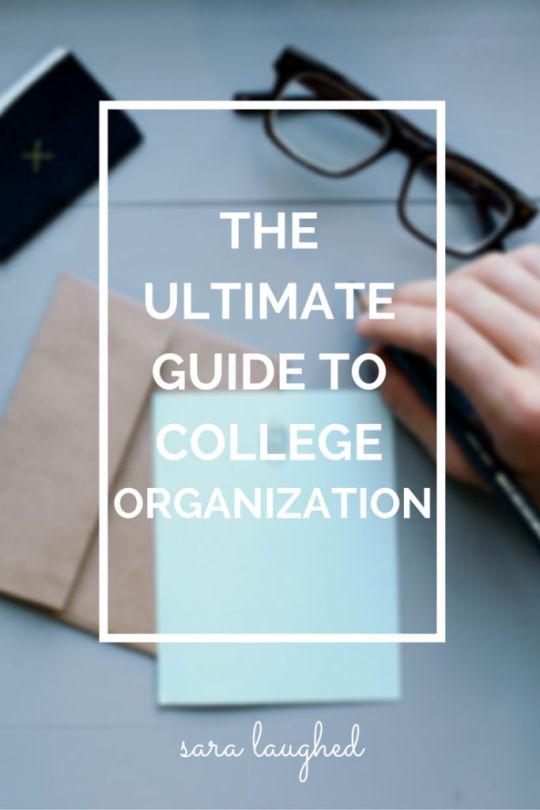A blog dedicated to posting notes and helping other people with school.
Don't wanna be here? Send us removal request.
Note
heyyy i've just been scrolling through the apwh tag and i wasnt sure if you knew that they completely changed the format of the test last year because the essay formatting you were talking about was v outdated? lots of love but there was 2 essays and 4 short answers this year
the original creators of this blog are all about a year out of high school now--we all took apwh back in like 2014! sorry if theyre outdated but our original posts catered to the test from 2014 and before!
i don’t know if any of the other formats changed this year, but feel free to let us know, that way we can make a few disclaimer posts to newcomers :)
-mod lizz
1 note
·
View note
Note
Any study or note taking tips for someone taking AP Human Geography?
You can find our tag list here!
5 notes
·
View notes
Photo




PART 2 of Spanish study guide
I hand-wrote these on Muji B-5 paper
(sorry that it’s not perfect)
part 1
197 notes
·
View notes
Text
How to Study Like a Harvard Student
Taken from Sophia Chua-Rubenfeld, daughter of the Tiger Mother
Preliminary Steps 1. Choose classes that interest you. That way studying doesn’t feel like slave labor. If you don’t want to learn, then I can’t help you. 2. Make some friends. See steps 12, 13, 23, 24. General Principles 3. Study less, but study better. 4. Avoid Autopilot Brain at all costs. 5. Vague is bad. Vague is a waste of your time. 6. Write it down. 7. Suck it up, buckle down, get it done. Plan of Attack Phase I: Class 8. Show up. Everything will make a lot more sense that way, and you will save yourself a lot of time in the long run. 9. Take notes by hand. I don’t know the science behind it, but doing anything by hand is a way of carving it into your memory. Also, if you get bored you will doodle, which is still a thousand times better than ending up on stumbleupon or something. Phase II: Study Time 10. Get out of the library. The sheer fact of being in a library doesn’t fill you with knowledge. Eight hours of Facebooking in the library is still eight hours of Facebooking. Also, people who bring food and blankets to the library and just stay there during finals week start to smell weird. Go home and bathe. You can quiz yourself while you wash your hair. 11. Do a little every day, but don’t let it be your whole day. “This afternoon, I will read a chapter of something and do half a problem set. Then, I will watch an episode of South Park and go to the gym” ALWAYS BEATS “Starting right now, I am going to read as much as I possibly can…oh wow, now it’s midnight, I’m on page five, and my room reeks of ramen and dysfunction.” 12. Give yourself incentive. There’s nothing worse than a gaping abyss of study time. If you know you’re going out in six hours, you’re more likely to get something done. 13. Allow friends to confiscate your phone when they catch you playing Angry Birds. Oh and if you think you need a break, you probably don’t. Phase III: Assignments 14. Stop highlighting. Underlining is supposed to keep you focused, but it’s actually a one-way ticket to Autopilot Brain. You zone out, look down, and suddenly you have five pages of neon green that you don’t remember reading. Write notes in the margins instead. 15. Do all your own work. You get nothing out of copying a problem set. It’s also shady. 16. Read as much as you can. No way around it. Stop trying to cheat with Sparknotes. 17. Be a smart reader, not a robot (lol). Ask yourself: What is the author trying to prove? What is the logical progression of the argument? You can usually answer these questions by reading the introduction and conclusion of every chapter. Then, pick any two examples/anecdotes and commit them to memory (write them down). They will help you reconstruct the author’s argument later on. 18. Don’t read everything, but understand everything that you read. Better to have a deep understanding of a limited amount of material, than to have a vague understanding of an entire course. Once again: Vague is bad. Vague is a waste of your time. 19. Bullet points. For essays, summarizing, everything. Phase IV: Reading Period (Review Week) 20. Once again: do not move into the library. Eat, sleep, and bathe. 21. If you don’t understand it, it will definitely be on the exam. Solution: textbooks; the internet. 22. Do all the practice problems. This one is totally tiger mom. 23. People are often contemptuous of rote learning. Newsflash: even at great intellectual bastions like Harvard, you will be required to memorize formulas, names and dates. To memorize effectively: stop reading your list over and over again. It doesn’t work. Say it out loud, write it down. Remember how you made friends? Have them quiz you, then return the favor. 24. Again with the friends: ask them to listen while you explain a difficult concept to them. This forces you to articulate your understanding. Remember, vague is bad. 25. Go for the big picture. Try to figure out where a specific concept fits into the course as a whole. This will help you tap into Big Themes – every class has Big Themes – which will streamline what you need to know. You can learn a million facts, but until you understand how they fit together, you’re missing the point. Phase V: Exam Day 26. Crush exam. Get A.
238K notes
·
View notes
Text
thesis statement: i just think it’s funny how…
body paragraph: first of all…
conclusion: so next time you…
292K notes
·
View notes
Text
If you’re in AP Euro and use The Western Hertiage, Since 1300 I found a teacher’s website where he has outlines for all the chapters
link is here
They can’t substitute reading a chapter but if you need to crash-course review it can help you out
9 notes
·
View notes
Quote
You will not need motivation as much as you will need discipline.
A good friend of mine, who is an excellent student + has the time do to many hours of piano practice every day. (via seven-colors-of-highlighters)
10K notes
·
View notes
Text
I love the bond that forms between students in an awful class
583K notes
·
View notes
Photo

Alright, school hasn’t started yet, but if you’re like me, it starts very soon (me? less than 48 hours). And if you’re like me, your foreign language practice has gone down on the wayside.
So I’m going to go through as many verb conjugations as I’ve remembered and any tips I have when using them. I’ll throw in some other grammar tips when I think of them. Now, this won’t cover every facet of Spanish grammar. (I’d need a book and a lot more education. This will be a long post regardless) But reviewing the conjugations and when to use them would be a good start, ¿no? Luego, ¡vamos a empezar!
(I’m going to do a read more because this post is too long)
*note: I’ll do conjugations without mentioning the subject, so here they are:
Yo
Tú
El/ella/usted
Nosotros
Vosotros
Ellos/ellas/ustedes
THE INDICATIVE MOOD
Alright, there’s 3 moods that I’m going to cover: indicative, subjunctive, and imperative. The indicative deals with what is factual. It’s arguably the most common mood in any language and the one you’re most familiar with.
There are several tenses within the indicative mood. I’ll cover them now.
Present/presente
This one’s pretty basic. This one’s the first you probably learned. You take the stem of the verb (so hablar turns into habl-) and you add the ending that matches the subject.
-ar/-er/-ir verbs
-o/-o/-o
-as/-es/-es
-a/-e/-e
-amos/-emos/-imos
-áis/-éis/-ís
-an/-en/-en
Yo camino en el parque. (I walk in the park.)
irregulars: ir, dar, estar, ser, y mas Beware of stem-changing verbs (like dormir) and verbs that are irregular in the “yo” form (saber, conocer, decir).
Preterit/pretérito
This one is for a single action in the past. Don’t confuse it with the imperfect (Which I’ll get to later). Again, take off the stem and add the proper ending.
-ar/-er and -ir verbs
-é/-í
-aste/-iste
-ó/-ió
-amos/-imos
-asteis/-isteis
-aron/-ieron
Yo caminé en el parque ayer. (I walked in the park yesterday.)
Irregulars: There’s tons. Look them up (x). Usually the stem changes and the endings are different than normal, but it’s not hard to learn.
Imperfect/imperfecto
This one gets confused with the preterit. Remember, the imperfect is for past actions that are habitual or ongoing. You can use them by themselves (I walked in the park on the weekends) or use them combined with the preterit (I was walking in the park when I heard the gunshots. In this case, “was walking” would be imperfect [caminaba] and “heard” would be preterit [oí]).
Again take off the stem and add the proper ending.
-ar/-er and -ir verbs
-aba/-ía
-abas/-ías
-aba/-ía
-ábamos/íamos
-abais/-ías
-aban/-ían
Yo comía mi pasta cuando entró my padre. (I was eating my pasta when my father entered.)
Irregulars: ir, ver, ser (that’s it. that’s all of the irregulars. use spanishdict.com to figure out the conjugations)
Present perfect/presente perfecto
This is what you use when an action has just been completed. Use the present tense of “haber” and use a participio pasado (Past participle). The participle is easy; simply drop the ending and add -ado if it’s an -ar verb and -ido if it’s an -er or -ir verb.
haber
he
has
ha
hemos
habéis
han
He terminado mi proyecto de inglés. (I’ve finished my English project.)
Irregulars; There’s a few irregular participles. Decir is dicho, not decido. Romper is roto, not rompido. There’s more. Studyspanish.com can help you find a list.
Present progressive/presente progresivo
These are your -ing verbs in English. Simply use estar and a gerundio/gerund. Gerunds are easy: drop the ending and add -ando to an -ar and add -iendo to an -er/-ir.
estar
estoy
estás
está
estamos
estáis
están
Estoy caminando en el parque. (I’m walking in the park.)
Future/futuro
There are two ways to form the future tense. One, you can conjugate “ir,” add “a,” and add an infinitive. “Voy a comprar” I’m going to buy. Or, you can use these endings that you add on to the entire verb. (Compraré/I will buy) The endings are the same regardless of the verb type.
-é
-ás
-á
-emos
-éis
-án
Caminaré en el parque. (I will walk in the park/I’m going to walk in the park)
Irregulars: often, the stem will change. Salir turns to saldr-, tener turns to tendr-, and more.
Conditional/condicional
Use this when you say something would occur. (Not the same as subjunctive, when you say something might occur.) In most cases, you’d say something along the lines of “I would buy the shoes, but I don’t have money” or “I’ll push the lever if you pull the switch).
These endings are the same as the imperfect endings for -er/-ir verbs. However, you can tell it’s conditional because the same endings go on the verb regardless if it’s -ar/-er/-ir, and the whole verb is kept instead of using the stem. (Comería el taco [I would eat the taco] vs. comía el taco [I was eating the taco]). The difference is subtle, but important.
-ía
-ías
-ía
-íamos
-íais
-ían
Caminaría en el parque, pero está lloviendo ahora. (I would walk in the park, but it’s raining right now)
Irregulars: the exact same ones as the future tense. Nice.
More tenses with past pariciples
You remember your past participles, with -ado/-ido endings (hablado, comido) and your irregulars (dicho, hecho, visto, escrito, puesto, roto, vuelto, devuelto, muerto, abierto, cubierto, frito). There’s 3 more indicative tenses that use these. They’re not super common, but they do pop up in more complex writing (Which you’ll be doing in AP). 1. El pluscuamperfecto/pluperfect
This is used to indicate an action in the past that was completed prior to another past action. Use these conjugations of haber and a past participle.
había habías había habíamos habíais habían
Yo ya había salido cuando él llegó. (I had already left when he arrived.)
2. El condicional perfecto/conditional perfect
This is used to state what would have taken place had something else not interfered. Again, use haber and a past participle.
habría
habrías
habría
habríamos
habríais
habrían
Yo habría ido pero no pude porque tuve que trabajar. (I would have left but I couldn’t because I had to work.)
3. El futuro perfecto/future perfect
This is rarely used in Spanish, fyi, but it expresses a future action completed prior to another action. Again, use haber and a past participle.
habré
habrás
habrá
habremos
habréis
habrán
Yo habré terminado con la tarea cuando llegarás a las ocho. (I will have finished with the homework when you arrive at eight.)
Indirect and Direct Objects/complementos indirectos y directos
If you’ve taken English, you should know what objects are. The direct objects answer “What?” or “whom? while indirect objects answer “to whom?” “for whom? “For what?”
For example, David gave me the pizza. (David gave the pizza to me). “Me” is the indirect object. It answers “To whom?” “The pizza” is the direct object. It is being given. It answers “What?”
In Spanish, David dio la pizza a mí. That’s a little wordy. We can also say “David me la dio.” David gave it to me.
(Note: Don’t just throw in your direct objects without context. In English, you can’t throw in “it” when “It” has not yet been established, so don’t do it in spanish.)
Indirect objects:
me
te
le
nos
os
les
Direct objects:
me
te
lo/la
nos
os
los/las
Sonia nos dijo. (Sonia told us.) If “le” comes before a “lo/la/los/las” it switches to “se”.
El mozo le subió el equipaje. (The bellhop took up the luggage to him/her) El mozo se lo subió.
THE IMPERATIVE MOOD
The imperative mood is most common when you’re telling others what to do. “Imperative” means “command.” “Mandatos,” (English: commands) are conjugated differently than indicative verbs because they are in the imperative mood.
Tú positive/tú afirmativo
To form this conjugation, you need to take the third person present indicative conjugation and use that conjugation.
For example, if you’re telling a friend to “Talk!” you use the third person singular of “hablar” in the indicative: “¡Habla!” You can also add objects to the end if you need to. “Dime, por favor” means “Tell me, please.” There’s a few irregulars: (more here)
Decir- di
Hacer- haz
Tener- ten
Ir- ve
Poner- pon
Salir- sal
Learn the irregulars. You’ll use them in conversation a lot.
Tú negative/tú negativo
These are conjugated in the subjunctive. (I’ll explain how to form the subjunctive shortly.)
The important thing to remember is that when you use a negative tú command, you can’t just put “no” in front of the verb. That won’t work.
Dime, por favor. (Tell me, please. This follows the rules for tú positive commands.)
No dime, por favor. (This is wrong!)
No me digas, por favor. (This is correct.)
Ud. + Uds. Commands/Ud. y Uds. mandatos
Thankfully, with your formal commands, they are all formed the same way (except the negative commands have a “no” out front.)
You use the subjuctive of the verb. (Again, I’ll explain later.)
Pongan la mesa, por favor. ([You all] set the table, please.)
Tenga un buen día. (Have a good day.)
No traiga su ensalada, por favor. (Don’t bring your [formal] salad, please.)
Ok now let’s learn subjuctive. It’s freaky.
THE SUBJUNCTIVE MOOD
Alright, the dreaded “subjuntivo.” It’s often the most confusing for Spanish language learners, since the subjunctive no longer really exists in English.
The subjunctive expresses doubt, desire, uncertainty, and wishes.
Here’s the main form to indicate when you need subjunctive:
trigger + que + change in subject -> verb in subjunctive mood.
Yo quiero (querer is a trigger) que (note it) tú (subject change) vayas (subjunctive).
Yo queiro que tú vayas.
I want that you go. (literal translation)
I want you to go. (loosely translated)
Triggers: THERE’S A TON. You’ll learn them by use.
es importante, es posible, es mejor, etc.
ojalá, quizás, tal vez (quizás and tal vez do not require “que”)
querer, esperar, no creer, desear, mandar, temer
preferir, insistir en, alegrarse de, estar contento/triste
sorprender, gustar, sentir
Remember, these only use the subjunctive if there’s a change in subject. In the cases of ojalá, quizás, and tal vez, those phrases automatically introduce doubt. (Oh that, maybe, perhaps) and you don’t need a subject. The phrases, when spoken, will trigger the subjuctive. Ojalá que él venga a la fiesta. (Oh that he comes to the party.) Quizás ella venga también. (Perhaps she’ll come too.)
So how do we form the subjunctive? Present subjuctive/presente del subjuntivo
First, you’re going to take the “yo” conjugation of the present indicative. Then take the stem.
Decir -> digo -> dig
Then you’re going to add these endings, depending on the ending of the original verb.
-ar/-er and -ir
-e/-a
-es/-as
-e/-a
-emos/-amos
-éis/-áis
-en/-an
So the original endings to present indicative verbs have switched.
decir -> digo -> dig -> diga (or whatever the ending calls for)
mirar -> miro -> mir -> mires
Irregulars: Again, quite a few. (Look at conjugations here)
Ir
Dar
Estar
Saber
Ser
Prefiero que tú vayas conmigo, no él. (I prefer that you go with me, not him.)
Difficult verbs
Some verbs, when conjugated a certain way, are indicative (almost always future), while when conjugated the oppositve (negative/postive), are subjunctive.
Why does this exist? The meaning of the verb changes from certain to uncertain. I’ll explain.
Yo dudo- I doubt. It’s uncertain, so it will be subjunctive. Yo no dudo- I don’t doubt. It’s certain, so it will be indicative.
subjunctive/indicative (future)
Dudar/no dudar
Es dudoso/no es dudoso
No estar seguro/estar seguro
no creer/creer
no es cierto/es cierto
No dudo que tú irás. (I don’t doubt that you will go.) Dudo que tú vayas. (I doubt that you go.)
Imperfect subjunctive/el imperfecto del subjuntivo
NOTE THIS:
If your trigger verb is in present or future indicative, the subjunctive verb will be in present subjunctive.
If your trigger verb is preterit, imperfect, or conditional indicative, the subjunctive verb will be in imperfect subjunctive.
To form the imperfect subjunctive, you need to take the stem of the 3rd person plural of the indicative and add these endings:
a (se)
as (ses)
a (se)
amos (semos) (put an accent over the last vowel of the stem)
ais (séis)
an (sen)
The se/ses endings are mainly used in literature. I prefer not to use them at all.
Hablar -> hablaron -> hablar ->
hablara
hablaras
hablara
habláramos (the accent preserves original pronunciation)
hablarais
hablaran
Tener -> tuvieron -> tuvier ->
tuviera
tuvieras
tuviera
tuviéramos
tuvierais
tuvieran
Dudaba que él viniera. (I doubted that he would come.) Quería que tú salieras. (I wanted you to leave.)
Conjunctions of time/conjunciones de tiempo
When using the following conjunctions of time:
cuando (when)
en cuanto (as soon as)
tan pronto como (as soon as)
hasta que (until)
después de que (after)
antes de que (before)
Note these 3 rules:
If a verb in the main clause conveys a future time, it’s uncertain. Use subjunctive.
If a verb in the main clause conveys a past time, use the indicative (preterit or imperfect)
Antes de que is always followed with subjunctive. (So use present or imperfect subjunctive, depending on the tense of the main clause)
Ella nos hablará (future ind.) cuando lleguemos (present subj.). Ella nos habló (preterit ind.) cuando llegamos (preterit ind.) Ellos saldrán (future ind.) antes de que nosotros lleguemos (present subj.) Ellos salieron (preterite ind.) antes de que nosotros llegáramos (imp. subj.)
In short, use subjunctive if the event has not yet occurred, and use indicative if the action has already happened.
Si clauses/cláusulas con si
You use “if” in English all the time. In Spanish, there’s definite tenses you should use.
Main clause/si clause
Future indicative/present indicative
Conditional indicative/imperfect subjunctive
Conditional perfect/pluscuamperfecto
Haré (future ind.) el viaje si tengo (pres. ind.) bastante dinero. I will take the trip if I have enough money.
Haría (conditional ind.) el viaje si tuviera (imp. subj.) bastante dinero. I would take the trip if I had enough money.
Yo habría hecho (conditional perfect) el viaje si hubiera tenido (pluscuamperfecto) bastante dinero. I would have taken the trip if I’d had enough money.
Note: these can switch around. Just follow the rules.
Haré el viaje si tengo bastante dinero. (I will take the trip if I have enough money.)
Si tengo bastante dinero, haré el viaje. (If I have enough money, I will take the trip.)
CONGRATULATIONS. You finished reading this. I know it’s a ton of information. There’s still more to Spanish grammar, but this should get you started.
Resources: www.studyspanish.com , www.spanishdict.com
Study spanish can explain these concepts further. Spanish Dict has the most accurate translations (yes, better than Google in my opinion, but as you grow in Spanish, you’ll learn that accurate translators do not exist) and has conjugations. So you can see EVERY CONJUGATION. And the irregulars are highlighted in red!
I hope this helps. Have a great school year!
-Andrew
199 notes
·
View notes
Photo

hello everyone! i know some of you will be going back to school soon, so i decided to make a huge masterpost that will hopefully help some of you out!
NOTETAKING
how to take pretty notes
notetaking from a textbook
how to make mindmaps
different types of notes
mindmapping.com
99 mindmapping resources
tips for taking efficient notes
effective notetaking
ORGANIZATION
staying organized
organization tips
get organized in high school
ten tips for staying organized
colour coding organization
tips for keeping your desk clean
PRINTABLES
form your habits
study and revision planner (2)
student planner
daily and essay planners
poetry terms chart
exam studying pack
loads of printables
2015 calender
chalkboard style to do list
READING
free online library
read free classics
what should i read next?
TESTS AND STUDYING
test taking guide
how to make a study guide (2, 3, 4, 5)
study tips (2, 3, 4)
study techniques
how to get straight a’s
how to study
making study schedules (2, 3, 4)
preparing for an exam (2, 3)
the basics of efficient studying
how to be an efficient test taker
how to review in less time
things NOT to do when studying
on test anxiety (2, 3)
study skills assessment
how to pull an all-nighter effectively
tips for answering multiple choice
how to answer exam questions
WRTING AND ENGLISH
develop your characters
essay-writing (2)
academic writing tips
create a bibliography (2)
MATH
math practice
math resources
free math help
learn basically anything
graphing calculator
learn any math
a bunch of calculators
square root calculator
cube root calculator
PRODUCTIVITY
how to wake up earlier
how to have a productive day
stop procrastinating (2)
how long to nap?
time management tips
tips to help you focus
energy throughout the day
STRESS AND WELLNESS
how to manage your stress
bedtime calculator
power naps
STUDY PLAYLISTS
minimalism
studying
film scores
you’ve got this
essential indie
pencil lead and lined paper
minimalist
celestial
love that aesthetic
space race
sunday morning
BULLET JOURNALLING
bulletjournal.com
bullet journal setup (2, 3, 4, 5)
minimalist bullet journal
bullet journal in a binder
pages to start
health tracker
how to use a chronodex
YOUTUBE VIDEOS
diy school supplies (2, 3, 4)
back to school supplies haul (2, 3, 4, 5)
finals survival guide
top secret study tips
how to take the best notes
study hacks
JOURNALLING, ART JOURNALLING, AND SKETCHBOOKS
journaling 101
what to put in a sketchbook
100 sketchbook ideas
119 journal prompts
50 art journal prompts
lists to make
how to collage in your art journal
collaging for beginners
how to start a sketchbook
art journaling 101
how to start a journal (2)
what to put in a blank notebook
keeping creative diary pages
turn an old book into an art journal
how to journal
what is an art journal?
must have art journal supplies
journal themes
art journal techniques
art journal inspiration
MISC
annotating a book
get back on track after missing school
convert just about anything
198K notes
·
View notes
Photo

I don’t know about you guys but I am psyched to get an education, woo. This year is a hella important year for me because if I don’t finish this school year with five As then I am a dead man walking, you get me? So this started off as a collection to help me get those fabulous As but I thought, what the hell? I’ll share this perfection with everyone else because sharing is caring. Anyways, down to the nitty gritty
184K notes
·
View notes
Photo










A full list of my guides to college success!
How to get your best grades in college (x)
The ultimate guide to college organization (x)
How to write the perfect college essay (x)
The ultimate guide to packing for college (x)
How to stay calm and reduce stress during college (x)
45 tips for staying organized in college (x)
How to prepare for college over the summer (x)
5 best apps for college students (x)
How to make a study plan for finals (x)
College is not “one size fits all” (and that’s a good thing) (x)
86K notes
·
View notes
Text
when people are getting their AP scores but your state isn’t getting them until later this week

366 notes
·
View notes
Note
Hey, I'm taking AP World History next year. Are there any tips/resources you wish you had or you think I should use to prep for the class or exam? Thanks :))
as always, you should check out our ap world history tag: /ap+world+history
(here: if you’re on on mobile- http://ohbrilliant-notes.tumblr.com/tagged/ap-world-history)
keep up with the reading! this is a MUST. it is a very extensive course, after all
as you take notes, whether in class or at home, write little anecdotes! little funny jokes that help you remember the details. ex) “Harsha (a Mughal emperor, if i remember correctly) was a Muslim devotee with a goatee (which was significant because it showed the spread of Islam and its effect on a previously highly Hindu culture). I took this class my sophomore year, and I still remember this when i’m going into my senior year.
for the essay section, i’d highly suggest that you reread your essays. you might see a familiar prompt, but also you’d trigger a memory of some information. it also helps with the structure.
apwh is very region centric! know ur regions. as they affect the other very strongly
don’t stress so much about the dates, per say. it’s more important to get a general feel for when they’re happening and how that relates to something else, whether in that specific civilization or in general.
if we can be of any more help, with this class or with any other class (ap or not) we, as blog runners, have taken several classes together and are willing to help!
-dana
3 notes
·
View notes
Text
AP Cram Packets Galore!
Someone on the Internet consolidated this list and sent it to me. So so helpful! GOOD LUCK everyone!
Art History Smarthistory: a multimedia web-book about art and art history Course-notes Barrons pdfs Biology AP Biology Exam Guide Chapter Review Giant Review Sheet Calculus AB & BC Cheatsheet (AB & BC) Stuff You MUST Know Cold for AP Calc (AB) If you see that, do this (AB)
EDIT: When you see that, do this
Chemistry AP Chemistry Notes Podcasts Quick Review Comparative Government and Politics Government Comparisons Cramsheet Study Sheet Computer Science Review: Part 1, Part 2 English Language Rhetorical Strategies AP Language Review Environmental Science Vocab to Know Tips APES Review European History STUDY GUIDES Exam Review Sheets French Language Cram packet Human Geography Course-notes Macroeconomics Every Graph You Need To Know (YouTube) Cram packet Microeconomics Cue cards Study guide
Physics B & C Cram sheet (B) Equations (C Mech) Equations (C Mech) Unit Notes (C Mech) Unit Notes (C) Unit Notes (C) Equations (C) Psychology Crib notes Cram packet Quizlet sets Statistics Cram packet Inference Procedures AP Stats formulas U.S. Government Cheat Sheet Review Materials U.S. History Cram Packet: part 1, part 2 The Giant AHAP Review Unit study guides Quizlet sets Quick Review The Comprehensive AP US History Study Guide World History Cram Packets and Review Sheets Cram packets by era Course-notes Mr. Hubbs History Reviews Released MC and review books Kiwiasian’s site ‒ released MC exams, review books in pdf Chilldude’s collection ‒ released MC exams, review books, textbooks in pdf
(note: NOT MY STUFF. The MC exams have been officially released by College Board. None of these materials were acquired through illegal means.)
57K notes
·
View notes
Link
Are you taking the SAT? ACT? How about those AP tests that are coming up in about 8 weeks? Well, here's an updated link of test prep books.
5 notes
·
View notes
